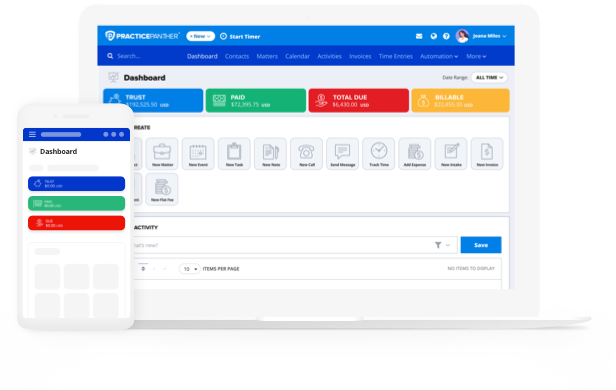Access the stream of this event on-demand. Submit the form here and view it for free!
Many attorneys have to learn about business development on their own, through trial and error as they grow their firm. Becoming a sales person for their own firm isn’t a skill that’s taught in law school. With the competitive nature of today’s world, many in the legal profession are their own salesperson and marketer — on top of practicing law. That’s why we had account manager at PracticePanther, Andy Stimmel, and three-time author and business development coach for attorneys, Steve Fretzin of Be That Lawyer, discuss 7 key tips to sell without being salesy and empower attorneys to take control of the prospecting process.
Why business development is so hard yet important for attorneys (05:36)
The most common roadblocks that Steve has seen amongst the attorneys he has worked with can be narrowed down to the same 10 elements. First, most attorneys don’t have a written marketing plan and rely on word of mouth or networking. They also don’t have set goals or metrics that are tracked and thus have no sense of urgency or control with prospective clients. This leads to the attorney offering free consultations without meaning to, and prospective clients not understanding the value you can bring them.
Making the business development process easier can be done by switching your approach with each prospect. Instead of approaching prospective clients with a sales-focused approach and presenting solutions up-front, you can open discussions with clients by walking them through the process of what it’d be like to work with you.
Step 1: Relationship (16:16)
It’s important to build a deeper level of trust with your prospects by doing your research on them and finding commonalities, rather than immediately getting into details of the business. Being liked by your prospective clients and adapting to their communication style can help increase the value of the relationship that you’re beginning to establish. By adapting in real-time, you increase the likelihood that they will open up to you and want to work with you.
Step 2: Agenda Setting (20:50)
In the live stream, Steve and Andy show a mock agenda that you can set at the beginning of an initial meeting. The agenda sets expectations for time, helps establish if there’s a fit to work together, and shares both your own expectations and the prospective client’s expectations for the meeting and an outcome for the next steps.
This saves not only your time but your prospect’s time and expectations as well. Remember, “No” is the second best outcome possible with any prospective client, and it’s easier if you have a clear outcome from this initial meeting.
Pay attention to your client’s experience (46:17)
First impressions translate beyond that initial meeting — prospective clients can also make a judgment based on the technology you have or don’t have. Instead of a convoluted intake process where clients have to print documents, fill out paperwork, scan, and email or mail them back, treating them with a seamless and tech-savvy experience can build upon their trust in your expertise. With PracticePanther, you can have a seamless intake process with customized forms that you can put on your website or load up on your iPad in the office. You can also put your firm’s logo and branding on eSignature forms that are built directly into PracticePanther, so you don’t have to worry about third-party integrations.
Listen to all 7 best practices from the live stream
The full recording of the live stream covers all the business development tips for your firm that you don’t want to miss out on. Fill out the form to access the recording below.



